Fishers finally …
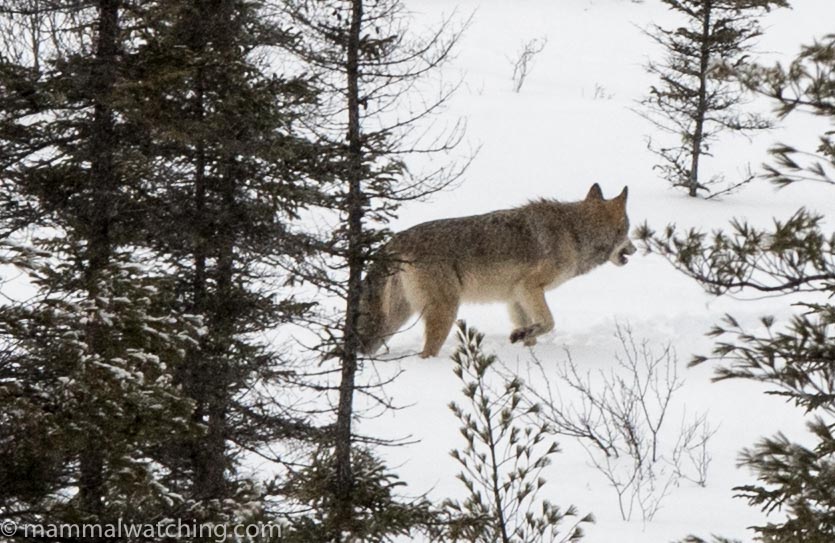
Eastern Wolf, Canis lycaon
Fishers were at the top of my list of mammals I wanted to see in the USA when I moved here five years ago. And despite at least seven attempts to see one they had remained my most wanted. These were becoming more than just a bogey beast for me: I was starting to believe I might have fallen victim to a Fisher Curse, after a string of bad luck of Tutankhamen’s tomb opening proportions. Previous trips had resulted in a speeding ticket, a run in with the Quebec cops, losing my rental car keys and what may well have been the low point of my daughter’s uneasy relationship with mammal trips.

Katy loves Fisher searching…
And I had gotten no closer to a Fisher.The species is making something of a comeback in the east of the USA, and is frequently reported in Connecticut and around Albany for example. I had even seen film of one taken by a cop in the Bronx just a few miles from where I live. But despite the comeback they remain a very difficult species to run into in the wild. So when I got an alert from Algonquin Provincial Park announcing that animals had been feeding on a Moose carcass in front of the visitor centre it was hard to pull myself away from the webcam and the photos on their Facebook page.
I’ve been to Algonquin a couple of times to look for the park’s “Eastern” Wolves, which may or may not be a different species to the larger Grey Wolves that occur elsewhere in Canada. Biologists are divided over the status of this species but the last I heard was that they probably are a different species (Canis lycaon). I saw one here in 2015.
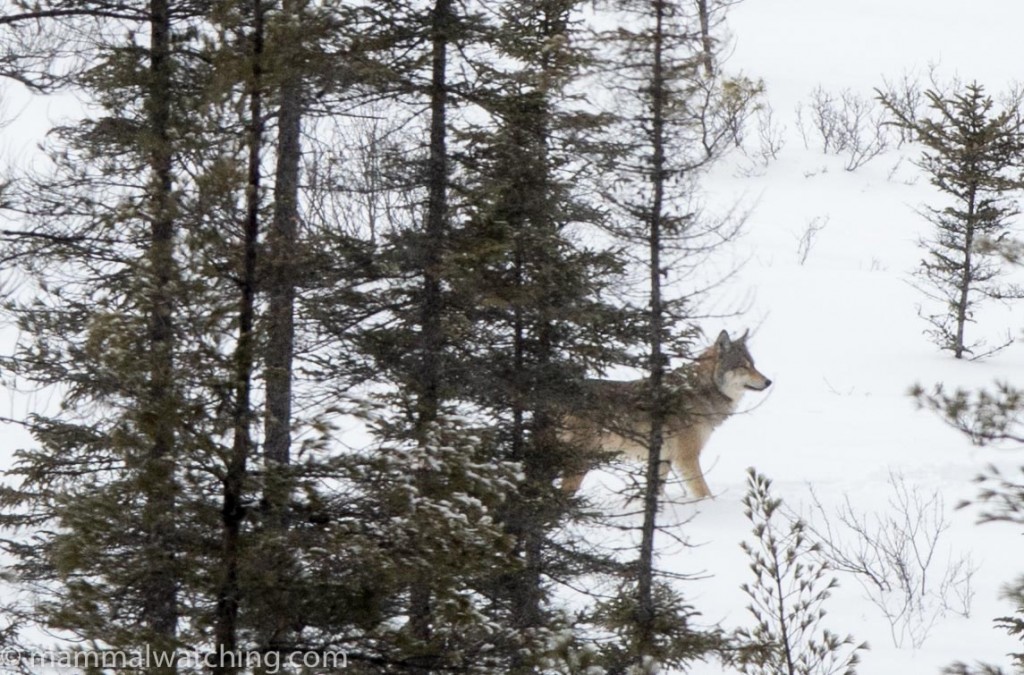
Eastern Wolf, Canis lycaon
In winter time the park regularly places road-killed deer and Moose in front of the visitor centre – and a webcam – so that people can enjoy watching the carnivores that come into scavenge.
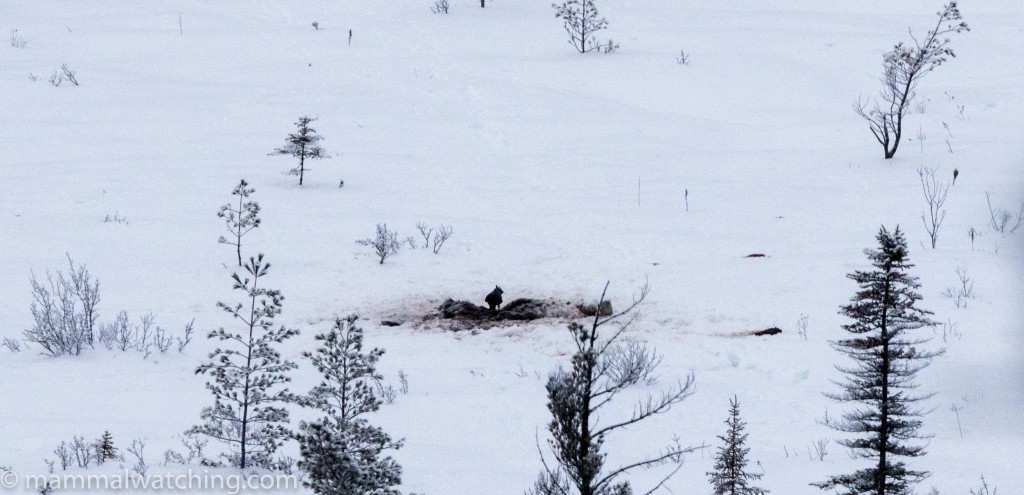
The view of the Moose carcass
Watching the webcam feed of Fishers, Eastern Wolves and Red Foxes was torment so, powerless to resist, I hopped on a flight to Toronto for a 24 hour Fisher twitch. Thankfully mammal twitches are few and far between and I guess this is only the third I time I’ve travelled at very short notice to look for a mammal that is generally hard to see (the other times were for a Southern Elephant Seal in Australia 15 years ago, and Northern Right Whale Dolphins in California last year). I say “thankfully” because these trips are addictive and if mammals flew around the place like birds I reckon I could kiss goodbye to the prospect of maintaining a job or any personal relationships.
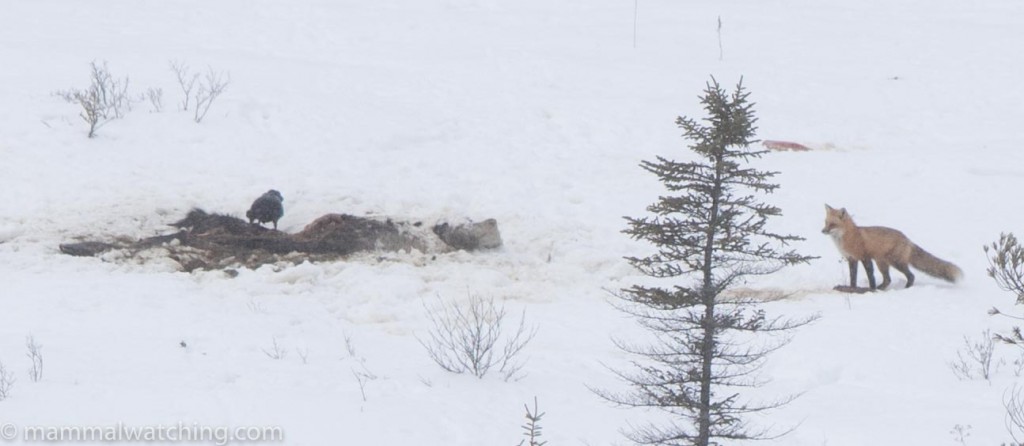
Red Fox, Vulpes vulpes, approaches the carcass
Fiona Reid, who lives near Ontario, put me up for the night and came along for the three hour drive to Algonquin. The Moose carcass is a few hundred metres in front of the visitor centre but you can only see it from the deck, so there is no point in getting to the park before the centre opens at 9a.m, and we were the first people there. We had watched the webcam on my phone on the drive into the park and had seen a Fisher feeding on the carcass at 7.30 a.m. But was this good news, because the animal was still around, or bad news because it might already have fed for the day? I decided I would have been stressed whatever I had seen on the webcam and gave up thinking about it.
The first mammals of the day were the many Red Squirrels running around the bird feeders.
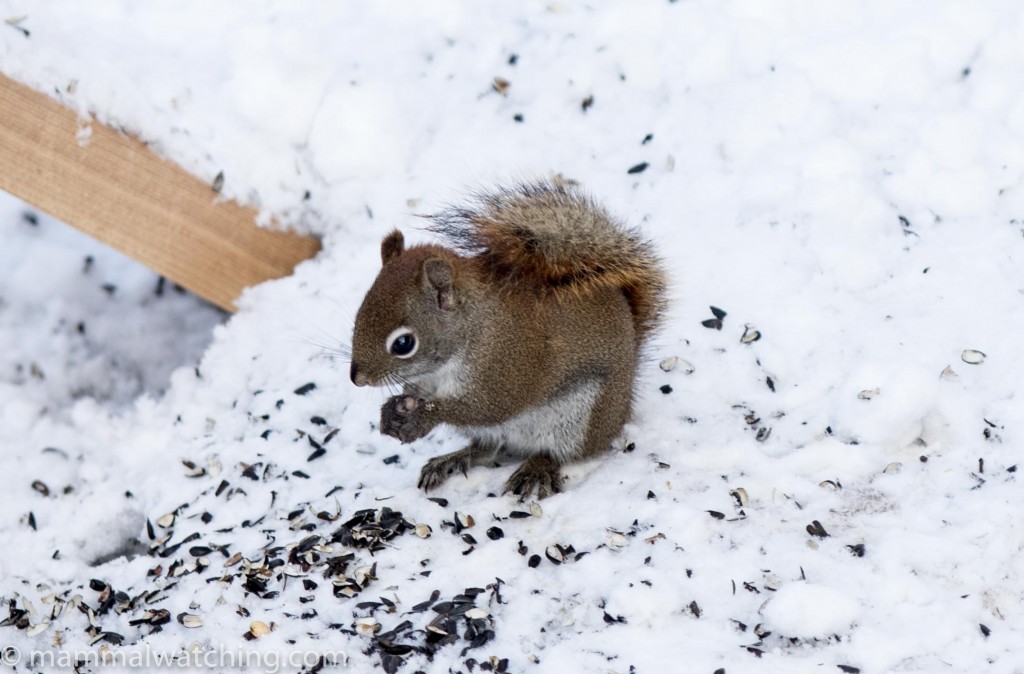
American Red Squirrel, Tamiasciurus hudsonicus
At 11 a.m. someone spotted a Fisher moving through the trees a couple of hundred metres in front of the viewing deck and heading towards the carcass. I didn’t even pick up my camera for the first couple of minutes preferring to watch the beast moving through the snow and trees, thinking I could get better photos when it was out in the open and eating the carcass. I took one photo of it’s back half as it moved into some trees. And then the animal disappeared.
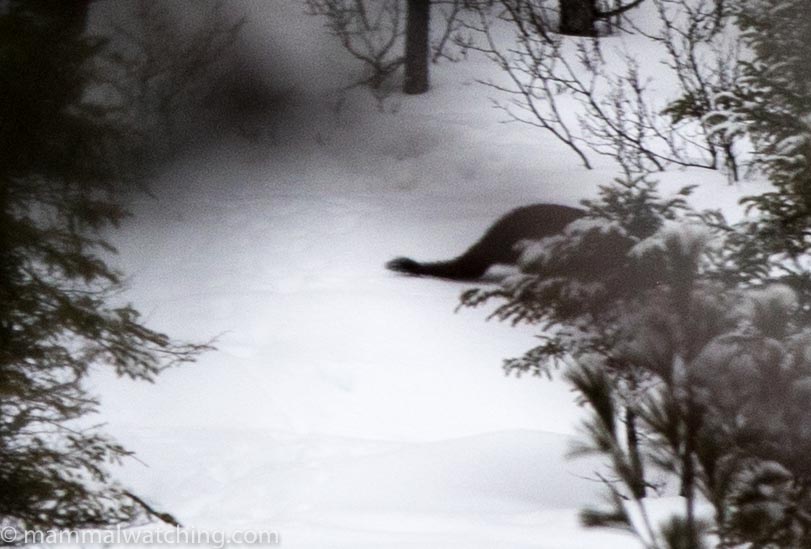
Half a Fisher, Martes pennanti
I was kicking myself not to have taken a more pictures but the sighting was excellent and the Fisher was every bit as beautiful an animal as I had thought it would be, the head and shoulders surprisingly golden.
Just before we were leaving, at 2.30 p.m, Fiona spotted a Fisher – presumably the same animal – in the same area moving away from the carcass.
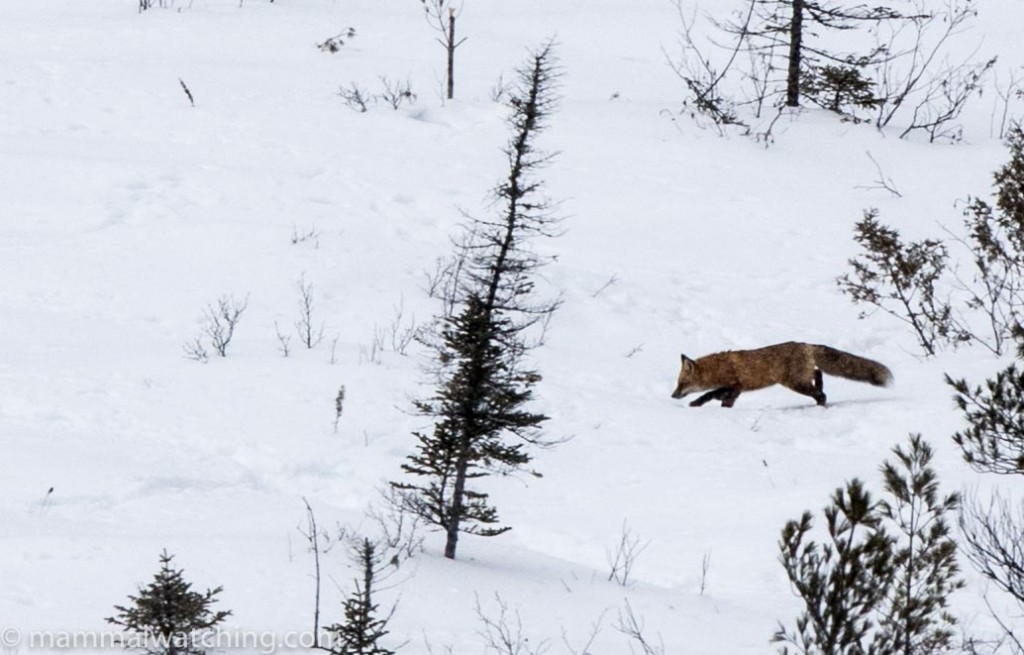
Red Fox, Vulpes vulpes
We heard Eastern Wolves howling when we arrived at the centre and they had, we were told, been feeding on the Moose during the night. We saw an animal at 12 p.m. and an hour later watched a couple more sitting out on the ice. But these animals did not approach the carcass either. In fact the only mammal that did feed on the meat while we were there was a Red Fox that wandered up to the Moose, grabbed a large chunk, and trotted off.
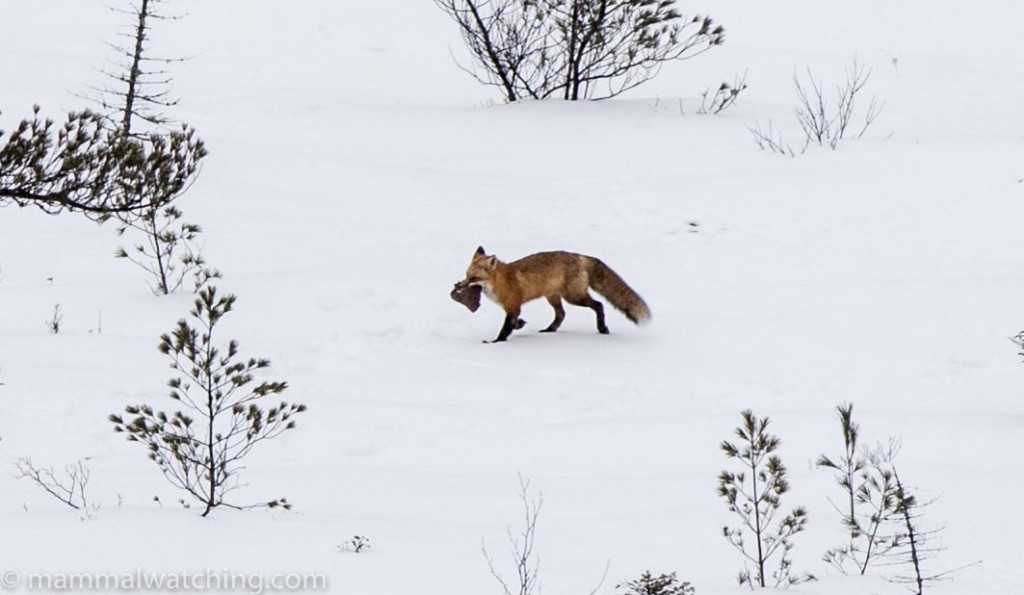
Red Fox, Vulpes vulpes
Algonquin is a great place to see American Martens. We didn’t look this time, though I had seen one along the Spruce Bog Trail in 2015. We heard some of the other visitors talking about seeing several Martens raiding the trash cans at the Mew Lake Campsite, with others seeing an animal along the Spruce Bog Trail.
A fun twenty four hours and a very happy diversion from USA politics.
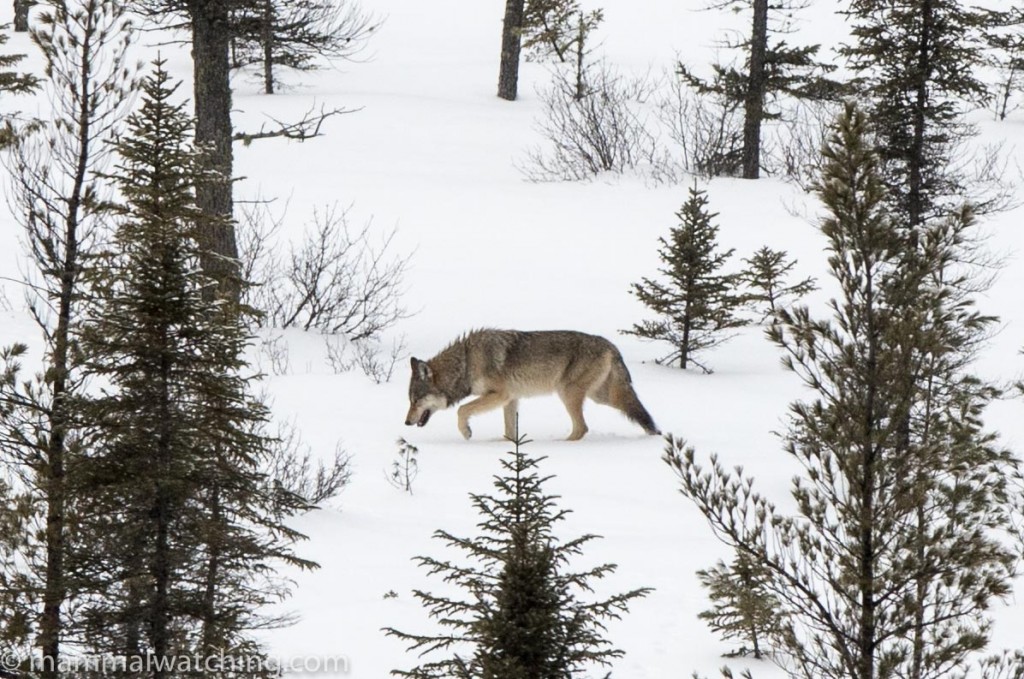
Eastern Wolf, Canis lycaon
8 Comments
-
-
-
Vladimir Dinets
Congratulations! A success well earned.
The taxonomy debate is no longer about C. lycaon being conspecific with C. lupus (it is not), but about it being conspecific with C. rufus. At least if you discount politically motivated people in certain government structures. And since C. rufus now seems to be heading towards a second extinction in the wild, the issue might no longer be of practical interest for mammalwatchers within a couple years. -
Ron Lambeth
My lifer Fisher ran across the Lake Louise, Alberta parking lot. However, I want to question Vladimir Dinets’ comment about Canis lycaon and C. rufus vs. C. lupus. With the reported Princeton U. DNA study of them it looks to me reasonable to say both lycaon and rufus are probably similar or the same C. latrans and C. lupus hybrids. What do you say, Vladimir? It is sad that North Carolina couldn’t muster the appreciation of their unique position with the red wolf enough to bring the gun people into the recovery program for the wolf.
-
Vladimir Dinets
C. lycaon and C. rufus are one or two species of hybrid origin. There are many other such species among mammals, for example, kipunji (originating from a baboon-mangabay hybridization) and Clymene dolphin (originating from striped dolphin x spinner dolphin hybridization). But they are not the same as either of the parent species. See:
http://advances.sciencemag.org/content/3/6/e1602250?utm_source=TrendMD&utm_medium=cpc&utm_campaign=TrendMD_0
Leave a Reply
You must be logged in to post a comment.


tomeslice
Great report, Jon!
I’m happy to see that you finally found your fishers!!
I can’t help but compare your fisher frustration to my caracal frustration.. I moved to Israel almost 4 years ago and that was my #1 target all along. Maybe my good luck will follow (or maybe you took the good luck coin of the year with your fishers) but either way, great start for 2017!!